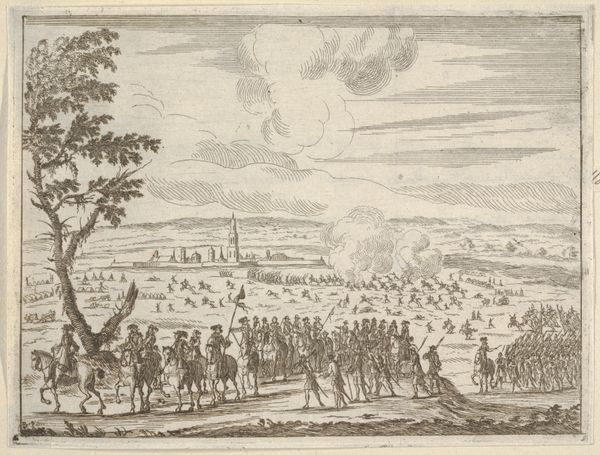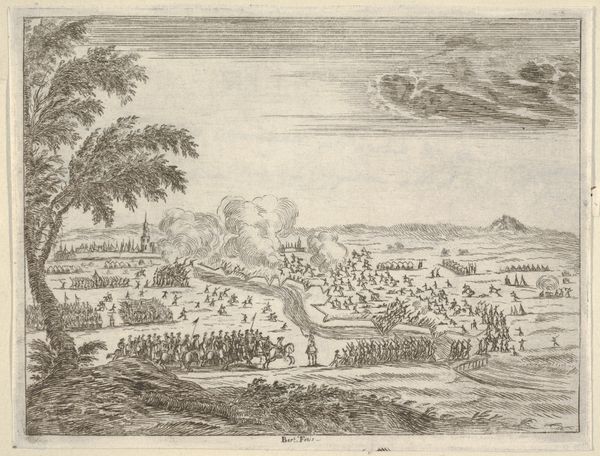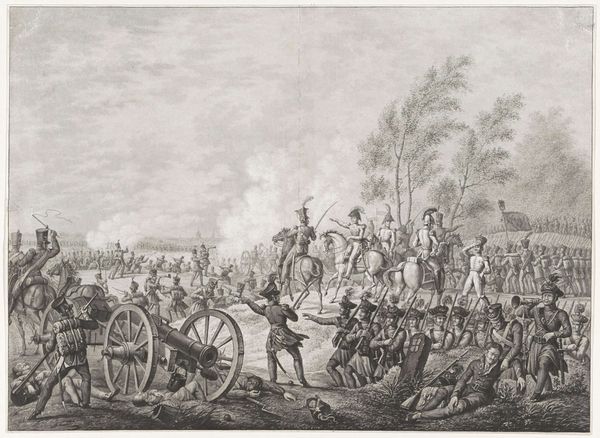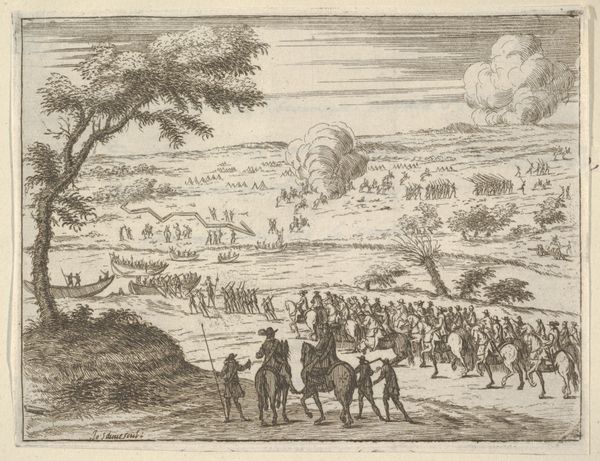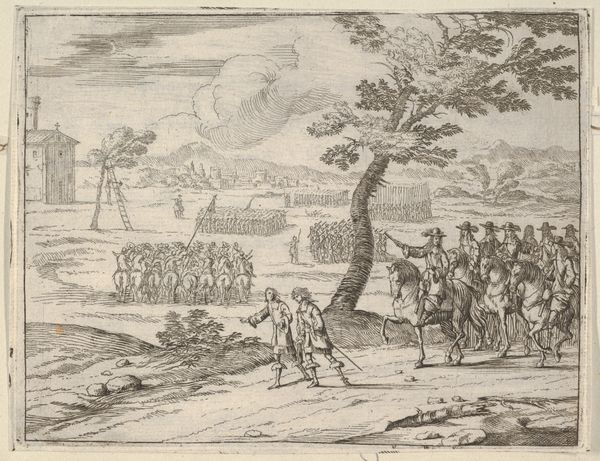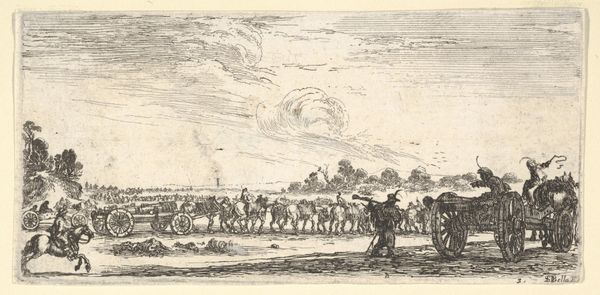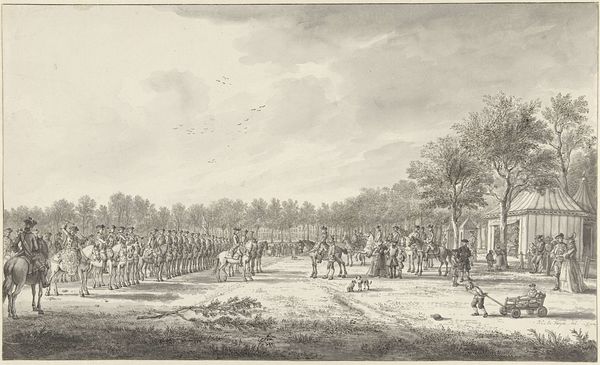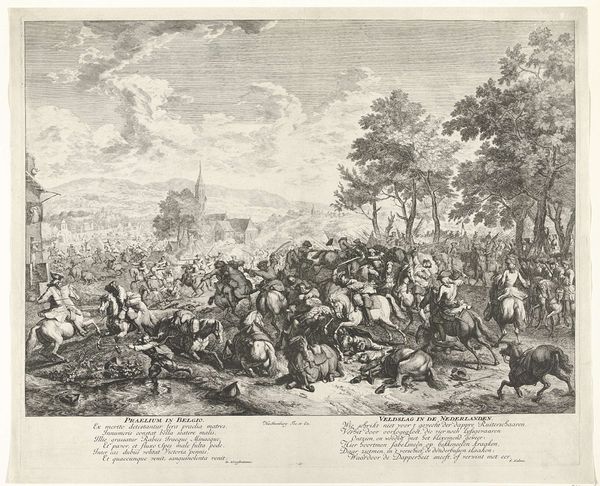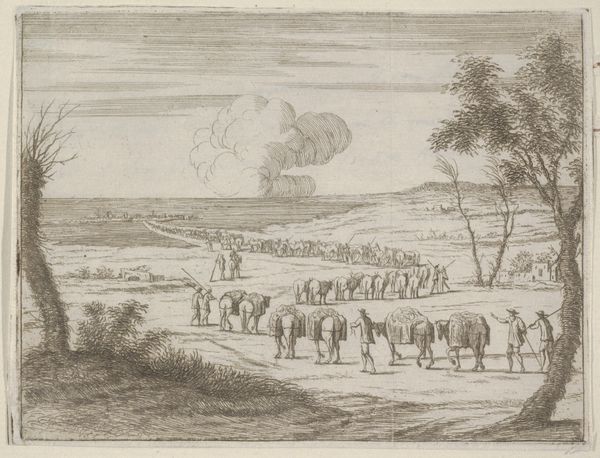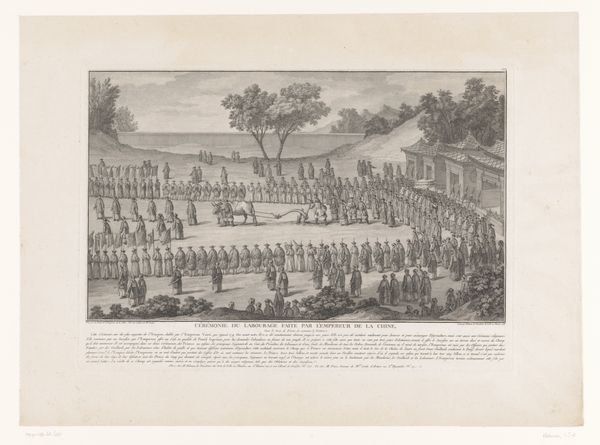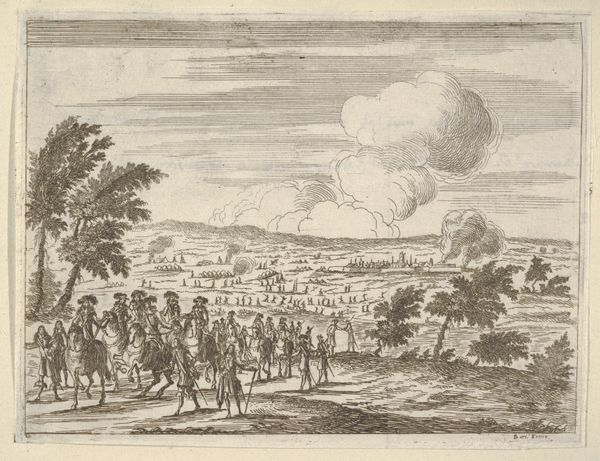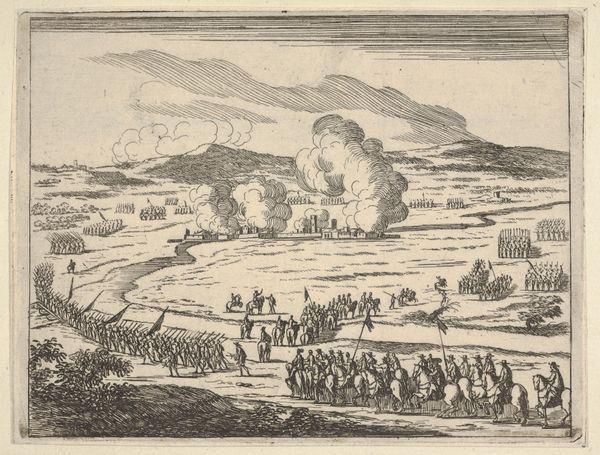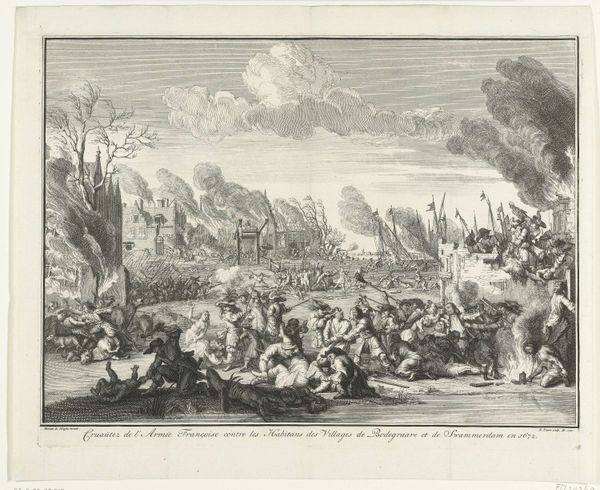
Entry of the Count of Thurn and Taxis into Hemissen 1646 - 1656
0:00
0:00
drawing, print, etching, ink
#
drawing
#
baroque
# print
#
etching
#
landscape
#
ink
#
history-painting
Dimensions: Plate: 9 3/4 × 16 1/8 in. (24.7 × 41 cm) Trimmed outside image and letters, but c. 3 x 6 mm within platemark.
Copyright: Public Domain
Editor: So, this is "Entry of the Count of Thurn and Taxis into Hemissen," made between 1646 and 1656 by Wenceslaus Hollar. It's an etching, so ink on paper. It feels very…regal, but also kind of chaotic, with all these figures. What symbols do you notice, that tell us about the cultural moment it represents? Curator: Immediately, the smoke. Is it celebration or warfare? Look at the orderly ranks of soldiers versus the seemingly random placement of trees, and the barely controlled chaos of animals milling in front of the procession. The controlled and uncontrolled. It shows us a society trying to impose order upon a world that still very much contains wild elements. Does the Count really control events? Editor: I see that. It's interesting how the repetition of the soldiers creates this idea of control, almost like a machine. But the puffs of smoke above make it seem fragile. Are there any specific symbols connected to the Count himself? Curator: Consider his position: slightly off-center, though undeniably the focal point. And look, a crowd has gathered in front of him. The act of procession is powerful. It becomes visual shorthand for authority itself, one we understand even today, but what about the location itself; is it not interesting it takes place among a gathering crowd, in between the town's perimeter and deep woods? How might we consider the "civilized" world encountering something "other," here? Editor: So, it's less about overt symbols and more about how the whole scene communicates power dynamics and societal anxieties. I guess I was expecting a specific crest or something. Curator: Sometimes the absence of the explicit IS the point. The scene isn’t JUST about THIS Count. It’s a statement about power itself, constantly negotiating between order and chaos, known and unknown. Editor: I didn't consider it that way. Thinking about the anxieties makes it more relatable than just a historical record. Thanks for sharing.
Comments
No comments
Be the first to comment and join the conversation on the ultimate creative platform.
